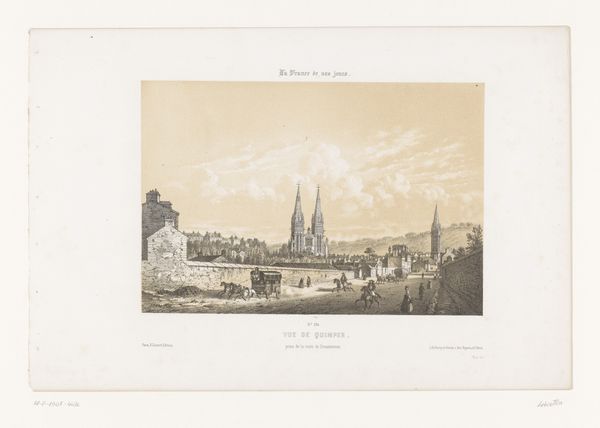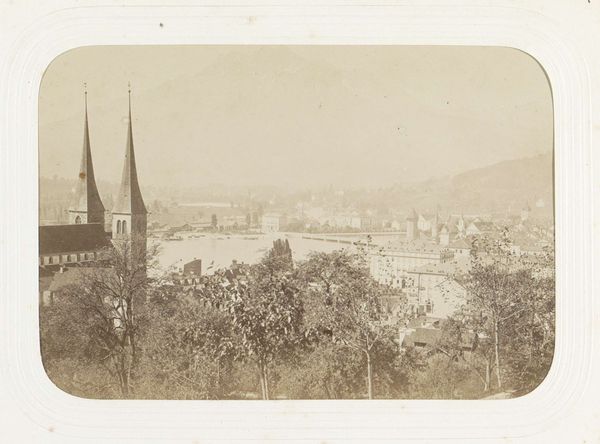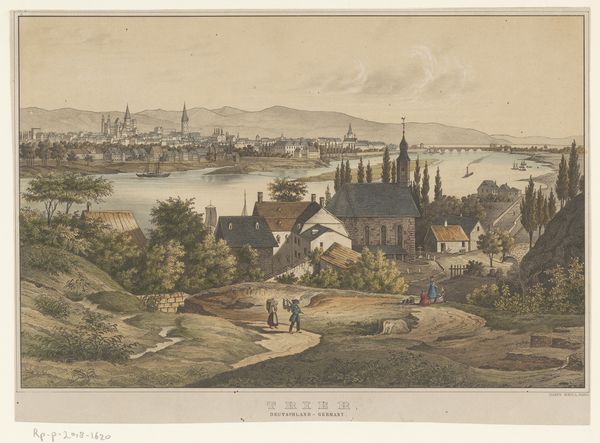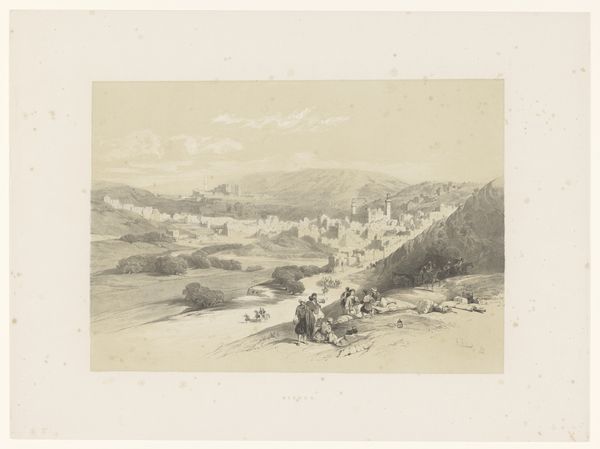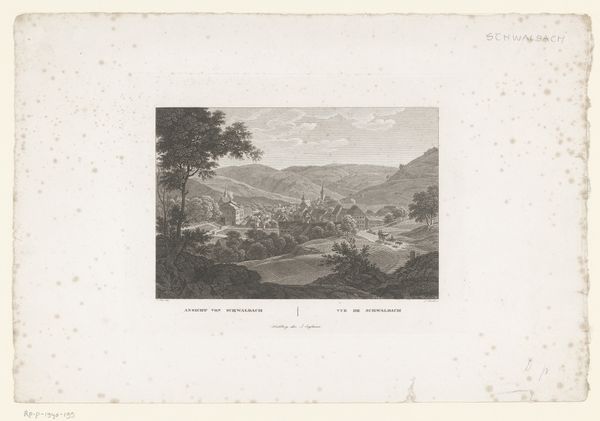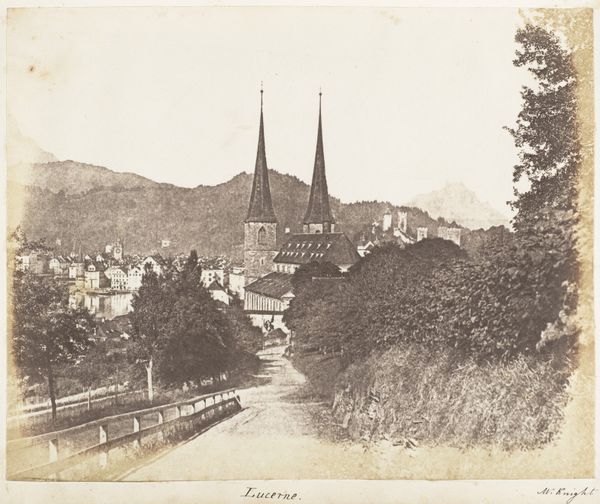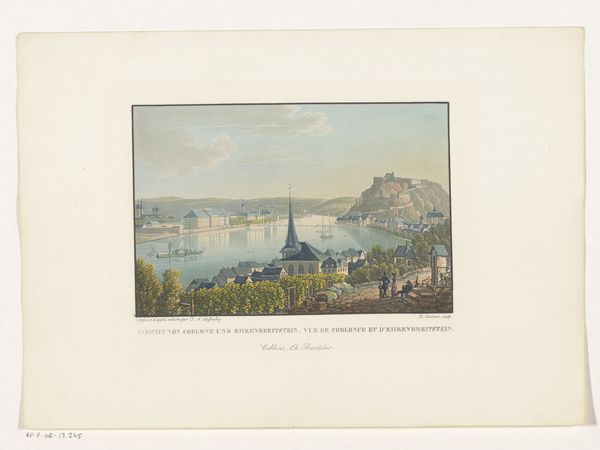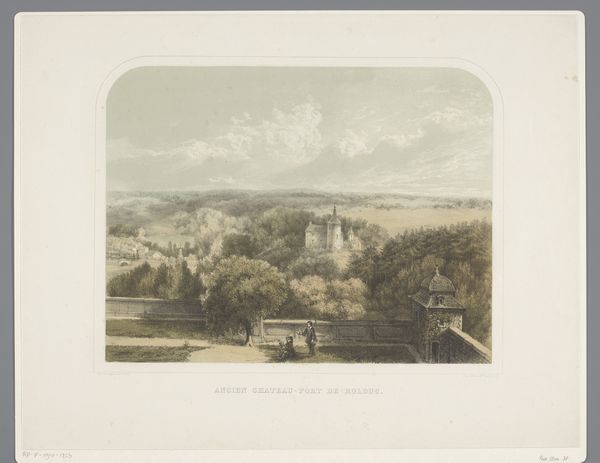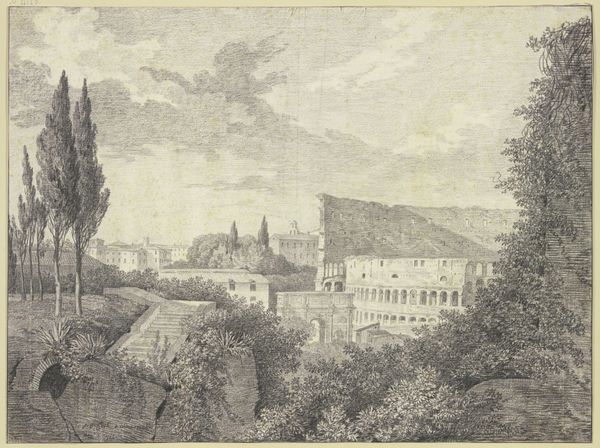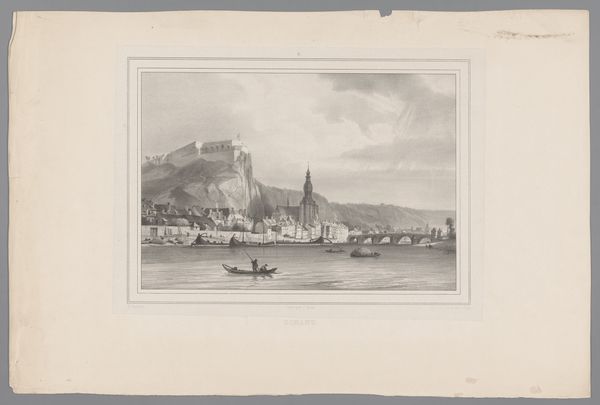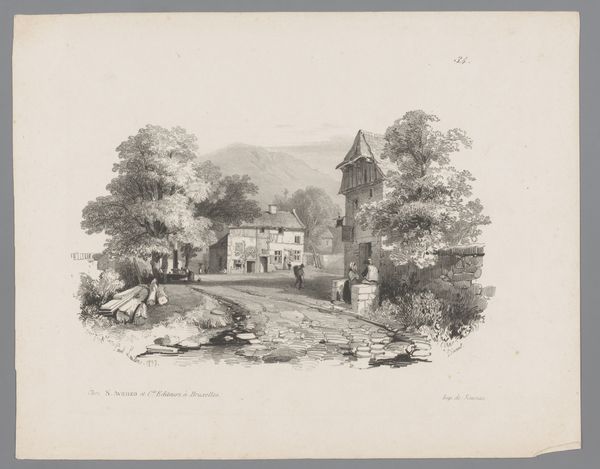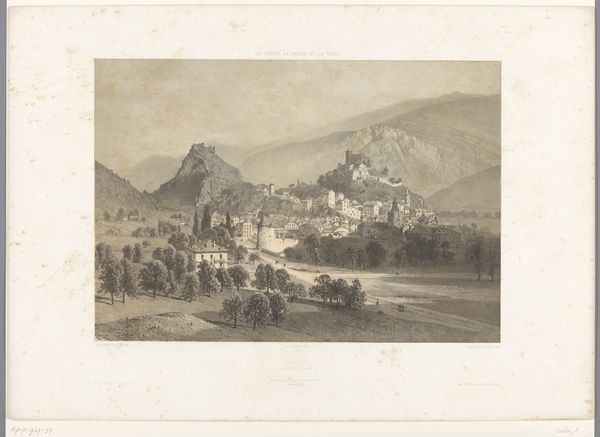
Dimensions: height 400 mm, width 565 mm
Copyright: Rijks Museum: Open Domain
Editor: This lithograph, "Zicht op Luzern" created in 1859 by Eugène Cicéri, it’s very delicate. The composition, with its soft colours and picturesque scene, evokes a feeling of serenity. I'm curious about how we can analyze its aesthetic appeal through a formal lens. What elements do you focus on when examining it? Curator: Immediately, the arrangement of pictorial elements attracts my attention. Note how Cicéri uses the horizontal lines of the lake and mountains to establish depth. The strategic placement of the two towers, their verticality, provide balance. Editor: The towers definitely stand out. Curator: Indeed. How does the foreground—the grassy field with the cows—relate to the background cityscape? Editor: I suppose it adds a layer of pastoral charm, separating us, the viewers, from the more urban scene. The texture seems interesting; can you see detail of brush strokes in a lithograph? Curator: Lithography doesn't typically have pronounced brush strokes. However, variations in tone and density create textural effects. Consider how the artist manipulates light and shadow. Editor: So it’s an illusion? It feels real somehow. What does it mean, the choices the artist made? Curator: The formal qualities serve to evoke a certain sentiment. How might we understand that effect? Editor: I think it highlights a longing for simpler times; a retreat from the quickly industrializing world, expressed in a refined arrangement of light, colour, and form. Thank you. This really helped me look beyond just what's depicted and focus on how it is depicted. Curator: The structure reveals a conscious pursuit of harmony and visual balance. Examining visual art like this becomes a rigorous exercise of close, objective analysis. Thank you.
Comments
No comments
Be the first to comment and join the conversation on the ultimate creative platform.
